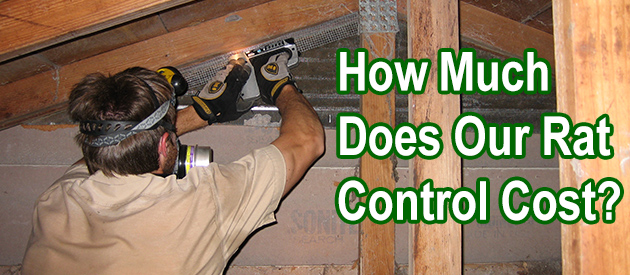McLennan County, Waco Rat Control Situation:
Hi David,We are struggling with mice in our garage. We've caught 2 on plain sticky traps (both actually caught on the same trap), did a thorough clean out, left about 5 other various styles of traps around the garage and there was no sign anything for about a week and a half. I had some suspicions (although, I didn't see any droppings) so I put another plain flat sticky trap near the area where we caught the other two and a few days later...bam...another one. Now I'm a little freaked out that there is some sort of colony living in the garage walls and/or garage attic. When we were putting stuff back on the garage shelves after the deep clean we thought we heard a scratching or scuffling sound but couldn't figure out where it was coming from. Can you give me an estimate on the cost of having your team come out and track down the source? It should all be relatively easy access.
Hello my name is Henry from Waco TX. We have been hearing cracking noises in the ceiling at night. Mainly in the master bedroom bathroom. I don't know why. Could it be a water source. I will set traps in the attic. I was thinking of cutting a hole in the drywall placing posion there. It says that rodent will not smell. Please any advice will help.
I have found two burrow holes on either side of my front door. One smells of urine and the other I watched a chipmunk disappear into. I am not entirely sure if they are in the house now, but I know that they were and those entry points have been sealed. So a few questions....... What do I do to eliminate the burrows at front door? How to get rid of that horrid urine stench? Do chipmunks share tunnels with rats? If they are going under the deck should I set traps? I have a lot of vine coverage in the back yard, what should I replace that with? Do the rats dislike a certain type of mulch/woodchips? I am in the process of removing the vine coverage, but what else should I do? Thank you for any suggestions and guidance!!!
Love your site. Just curious why you don't talk about crawlspaces and only attics? I assume it's the same concept, but I never saw anything about it mentioned.
Waco Rat Control Tip of The Week
What Diseases Are Caused By Rat Urine?
Rats are undoubtedly one of the animals that transmit the greatest number of diseases worldwide. These rodents are a very unpleasant species for humans, not only because they spend a lot of time in the garbage, but also because of the risk they pose to humans.
How Can You Get Infected Through A Rat's Urine?
Unfortunately, there are many ways a person can get a disease, virus, or infection from a rodent. From the moment a rat enters your property, you are exposed to a number of dangers that can seriously affect your health.
It is possible to become infected through direct contact with an object or food contaminated with rat urine. Rats often leave a trail of urine so that other rats can follow it to the best food source. This is why there could be rat urine on your food or even in the water.
Another way to get infected is to inhale dust contaminated with rat urine. The most frequent way to get infected by rat urine is through a fresh wound; the infection will have better access to your body.
Hantavirus
It is considered to be a viral disease that seriously affects the body; it can cause hemorrhagic fever and affect the lungs. The disease is found in rodents of all types and is mainly transmitted through their urine. Some symptoms of the disease are:- Fever
- Muscular aches and chills
- Dizziness
- Gastrointestinal problems
Leptospirosis
This infection may be better known as Weil's disease. It is considered to be a risky illness because if it is not treated in time it could be fatal. It is transmitted to humans through the urine of a carrier animal, including rats. This infection has all the symptoms of a normal infection, such as fever, dizziness, and body pain, except this infection can affect multiple important organs.


